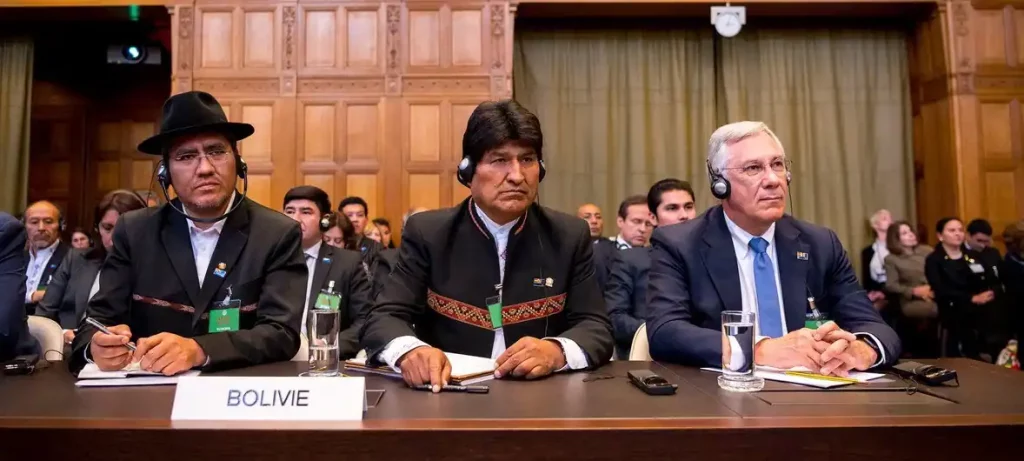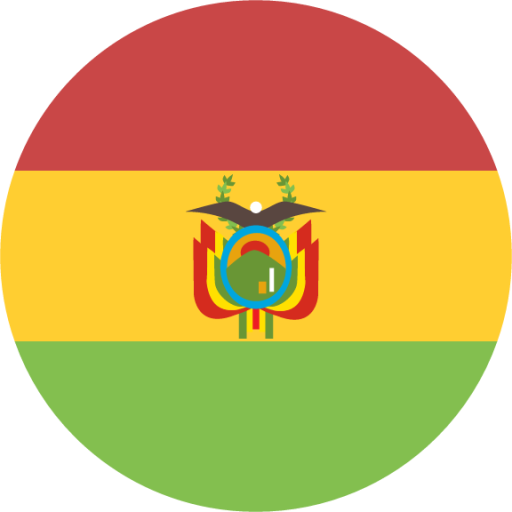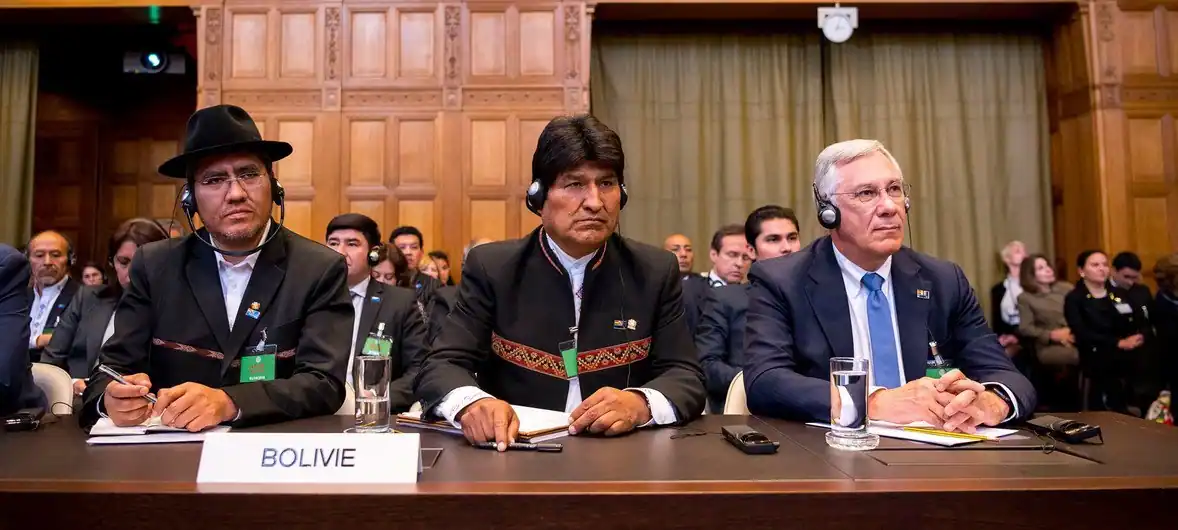Have you ever wondered why Bolivia is a landlocked country, without any coastline or direct access to the sea? It’s an interesting question that can be traced back to a historical event that changed the geography of this South American nation. In this article, we will explore the details of how and when Bolivia lost its access to the sea during the war with Chile.
Brief history of the Pacific War
The War of the Pacific, a significant conflict in the late 19th century, reshaped the geopolitical landscape of South America, particularly affecting Bolivia, Chile, and Peru. This war, which lasted from 1879 to 1884, was rooted in deep-seated disputes over territorial claims and control of resource-rich areas.

At the heart of the conflict were the nitrate-rich deposits in the Atacama Desert, an area of immense economic value at the time. Nitrates were essential for manufacturing gunpowder and fertilizers, making them a highly coveted resource on the global stage. Both Bolivia and Chile staked claims to this lucrative region, leading to heightened tensions.
The immediate spark for the war was Bolivia’s decision to impose taxes on Chilean companies operating in the Atacama, a move that violated an agreement exempting these companies from taxation for 25 years. In retaliation, Chilean forces occupied the Bolivian port city of Antofagasta in 1879. Bolivia’s declaration of war on Chile, followed by Peru’s involvement due to a secret alliance with Bolivia, escalated the situation into a full-blown war.
During the conflict, Bolivia lost its coastal territory, including the critical port of Antofagasta, to Chile. This loss was a severe blow to Bolivia, effectively making it a landlocked country and drastically impacting its economic and geopolitical standing. The Chilean victory resulted in their control over the entire coastline, including the disputed nitrate-rich areas, altering the balance of power in the region.
The aftermath of the War of the Pacific had lasting implications. For Bolivia, the loss of direct access to the sea has been a continual source of economic and political challenges, a situation that remains a point of contention in Bolivian-Chilean relations. This conflict stands as a pivotal moment in South American history, marking a turning point in the development and international relations of the involved nations.
How Did Bolivia Lose Its Sea?
The loss of Bolivia’s access to the sea can be attributed to the outcome of the War of the Pacific. Chile, which aligned itself with Peru, ultimately emerged as the victor in the conflict. As a result of their victory, Chile was able to claim large portions of Bolivia’s coastline, effectively turning the country into a landlocked nation.
Bolivia’s defeat in the war was a devastating blow for the country. Losing access to the sea had far-reaching consequences, particularly for its economy and trade. The natural resources and lucrative trade routes that were once available to Bolivia through its coastal territory were suddenly inaccessible.
When Did Bolivia Lose Access to the Sea?
The precise moment when Bolivia lost its access to the sea can be traced back to the final stages of the War of the Pacific. In 1884, Chile and Bolivia signed the Treaty of Peace and Friendship, which formalized the territorial changes resulting from the conflict.
As per the terms of the treaty, Bolivia ceded its coastal territories to Chile, including the valuable port of Antofagasta. This transfer of territory effectively cut off Bolivia from any direct access to the sea, making it a completely landlocked country.
The consequences of losing access to the sea were immediate and continue to affect Bolivia to this day. The country was forced to rely on its neighboring countries, particularly Chile and Peru, for trade and access to international waters. This dependence has had a significant impact on Bolivia’s economy, as it struggles to compete in global markets without direct access to the sea.
Challenges and Implications of Bolivia’s Landlocked Status
Economic Impact
Bolivia’s lack of a direct connection to global trade routes as a landlocked country significantly impacts its economy. The absence of a coastline necessitates dependence on neighboring countries for access to international markets, often resulting in logistical complications and increased costs.
- Increased Transportation Costs: Goods must travel longer distances, often through multiple countries, leading to higher freight charges. This scenario increases the prices of imports, making them less competitive in the global market.
- Trade Dependency: Bolivia’s trade is heavily reliant on political and economic relations with bordering nations. Any diplomatic tensions can disrupt these trade routes, adversely affecting the economy.
Geopolitical Constraints
Being landlocked places Bolivia in a delicate geopolitical position, often dependent on the diplomatic goodwill of its neighbors for vital access to the sea.
- Limited Naval Capabilities: Without a coastline, Bolivia cannot develop a conventional navy, limiting its role in international maritime security and defense.
- Restricted Global Influence: The lack of a maritime presence curtails Bolivia’s influence in global maritime policy and economic forums, impacting its overall international standing.
Missed Maritime Opportunities
The absence of coastal access prevents Bolivia from directly exploiting marine resources and participating in lucrative maritime industries.
- Untapped Marine Resources: Coastal nations often benefit from marine resources like fisheries, oil, and gas. Bolivia’s landlocked status means it misses out on these potential revenues.
- Limited Tourism Potential: Coastal regions are typically tourist hotspots. Bolivia lacks the opportunity to develop seaside tourism, which can be a significant economic booster.
Environmental and Social Effects
Being landlocked also has environmental and social repercussions for Bolivia.
- Environmental Challenges: The increased land transportation contributes to higher carbon emissions. Also, Bolivia faces limitations in accessing marine biodiversity for research and conservation.
- Social Development: The economic limitations can hinder social development, affecting areas like healthcare, education, and infrastructure, as the country might allocate fewer resources to these sectors due to economic constraints.
Strategic Responses and Adaptations
Bolivia has employed various strategies to mitigate these challenges, illustrating the country’s resilience and adaptability.
- Diversifying Trade Partners: Bolivia is exploring new trade agreements and partnerships beyond its immediate neighbors to reduce dependency and improve economic stability.
- Investment in Transportation Infrastructure: Improving road and rail networks within and across its borders is crucial for Bolivia to enhance trade efficiency.
- Leveraging Internal Resources: Focusing on the development of domestic industries, such as mining, agriculture, and energy, helps Bolivia compensate for its landlocked limitations.
Current Efforts to Regain Access to the Sea
Despite the challenges posed by its landlocked status, Bolivia has made several diplomatic and legal efforts to regain access to the sea. The country has taken its case to international forums, arguing that its loss of coastal territory was the result of an unjust war, and that Chile has an obligation to negotiate a solution that restores Bolivia’s sovereignty over the sea.

In 2018, the International Court of Justice (ICJ) ruled on a case brought by Bolivia against Chile. The court concluded that Chile did not have a legal obligation to negotiate sovereign access to the Pacific Ocean for Bolivia. While this ruling was a setback for Bolivia’s aspirations, the country continues to advocate for its cause on various platforms.
Despite the ongoing efforts, it is uncertain whether Bolivia will regain its access to the sea in the near future. The geopolitical complexities and historical context surrounding the issue make it a challenging and sensitive topic to resolve.
In conclusion, Bolivia lost its access to the sea during the War of the Pacific, a conflict with Chile that took place in the late 19th century. The outcome of the war resulted in the transfer of coastal territories from Bolivia to Chile, effectively turning Bolivia into a landlocked country. This loss has had significant economic and geopolitical consequences for Bolivia, as it struggles to compete in global markets and navigate the challenges of being landlocked.
FAQ’s – Why Bolivia is a Landlocked Country
Bolivia became landlocked after losing its coastal territory during the War of the Pacific (1879-1884). The war was fought mainly against Chile over control of nitrate-rich areas, and as a result, Bolivia lost its access to the Pacific Ocean.
Bolivia lost its access to the sea following its defeat in the War of the Pacific. The conflict ended with the Treaty of Peace and Friendship of 1904, where Bolivia ceded its coastal region to Chile, thus losing its coastline.
The primary cause was disputes over the control of nitrate deposits in the Atacama Desert. Bolivia’s attempt to tax Chilean nitrate companies, violating previous agreements, further escalated tensions, leading to the war.
Yes, Bolivia has made several diplomatic efforts to regain a sovereign access to the sea. These efforts include negotiations with Chile and bringing the case to international courts, but as of now, Bolivia remains landlocked.
Losing access to the sea had significant economic and geopolitical impacts on Bolivia. It limited the country’s trade options and maritime resources, contributing to challenges in economic development and regional integration.

